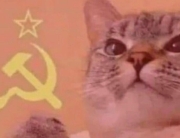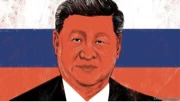(Thread IKs:
fart simpson)
|
stephenthinkpad posted:^^ Thank you. only the hazing in the context of younger pupils in a public (boarding) school setting
|
|
|
|

|
| # ? May 28, 2024 07:32 |
|
I am now wise to the holodomor thanks to the Asia thread Also Roald Dahl was a fag and had to sit on a dunny seat in the morning to warm it up for his boazer
|
|
|
|
https://twitter.com/Chen_YenHan/status/1741005048635965746?t=aDUBfzLPvBPHM68eCyLEEA&s=19 Nominative determinism ftw
|
|
|
|
gradenko_2000 posted:https://twitter.com/Chen_YenHan/status/1741005048635965746?t=aDUBfzLPvBPHM68eCyLEEA&s=19 the military understander has logged on
|
|
|
|
gradenko_2000 posted:https://twitter.com/Chen_YenHan/status/1741005048635965746?t=aDUBfzLPvBPHM68eCyLEEA&s=19 Genuine meritocracy
|
|
|
|
gradenko_2000 posted:https://twitter.com/Chen_YenHan/status/1741005048635965746?t=aDUBfzLPvBPHM68eCyLEEA&s=19 Clearly a propaganda article, instead of truthfully saying this man was installed after a vicious purge it describes this as an "appointment."
|
|
|
|
But how will Biden respond to this provocation? Cornpop on the joint chiefs?
|
|
|
|
|
Bald Stalin posted:I am now wise to the holodomor thanks to the Asia thread now what’s a boazer? I think every explanation is going to have follow up questions going forward
|
|
|
|
Rudeboy Detective posted:But how will Biden respond to this provocation? He is going to make Major a Major.
|
|
|
|
https://x.com/axios/status/1741472802723467769?s=20
|
|
|
|
chairman xi i stand ready to bring the rogue that is america to heel 🫡
|
|
|
|
Posting some of the more salient bits from this: https://thetricontinental.org/dossier-64-condition-of-indian-working-class/ The Condition of the Indian Working Class Due to the lockdown, at least 120 million workers, or 45 percent of India’s non-agricultural workforce, lost their jobs. Employers were under no moral or legal obligation to pay their workers, many of whom did not even receive their back wages. Some workers only had a few days’ worth of food in hand while others found themselves with no money or food at all, and many were expelled from the shantytowns where they lived [...] The lockdown demonstrated the fragility of the Indian working class: only a small push was needed to throw vast sections of the workforce into homelessness and hunger [...] The majority of the urban working class – nearly half of urban India – lives in slums, where the air is fetid and the surroundings squalid. Light barely penetrates the narrowly packed brick boxes and sheds, a few inches separating each dwelling from the other. Families are packed tightly into narrow rooms, where privacy and breathing space are alien. Migrant workers pile on top of each other in single rooms with their meagre belongings. In most of these slums, which do not have proper drainage systems, the surroundings becoming toilets. The social catastrophe is hard to describe: workers fall into collapsed septic tanks, drowning in filth; gas cylinders, the main form of cooking energy, explode because their production is effectively unregulated; neighbourhoods turn into swamps during the heavy monsoon rains, with dysentery, dengue, malaria, and typhoid given free rein [...] Two Indian pharmaceutical companies had a duopoly in the country’s COVID-19 vaccines. Even as the pandemic spiralled out of control, the government procrastinated bringing in the more than capable public-sector companies to increase the production of vaccines. Given that one of the vaccines was developed by government research institutes, the public sector could easily have been tasked with ramping up the production and delivery of vaccines [...] From March 2020 to March 2022, the profits of India’s big businesses doubled, as did the wealth of the country’s billionaires [...] Unlike in socialist countries, the public sector in India was built for a limited purpose – to facilitate the growth and accumulation of the private sector. The raison d’ętre of the Indian public sector was not to maximise profits, but to provide a sustainable ecosystem for private industry – hence the investments in infrastructure and inputs like heavy machinery and steel, which in the absence of the public sector would have had to be imported from Western countries at very high costs. [...] Strong workers’ movements fought to build key trade unions that intervened to ensure that legislation regarding work hours, wages, benefits, and collective bargaining would be implemented, strengthened, and expanded to include more and more of the workforce. There are three reasons why public-sector workers were able to make these gains: first, because the capital-intensive nature of the public sector and subsequent concentration of workers in large factories allowed strikes to inflict rapid damage on profits; second, because the largely undereducated and underfed population meant that the reserve army of labour to undercut the skilled public-sector workers was not always available; and third, because of the tradition of struggle and the trade union culture that developed in these factories, the public-sector workers developed high levels of class consciousness [...] only a small segment of the Indian working class could access these rights [...] in India, 83 percent of the workforce is in the informal sector, consisting of a multitude of small, unincorporated enterprises alongside household and precarious work [...] In 1991, the Indian government made an agreement with the International Monetary Fund to liberalise the economy in exchange for short-term financial assistance. This included the government’s commitment to ‘reform’ the labour market and further open up the partly protected Indian economy to foreign capital [...] India was attractive to foreign capital not only because of the size of its internal market, but also because of its large pool of workers who were being paid criminally low wages. Over the years since independence, workers remained underpaid and underfed, but there was a significant change: a large section of them had become literate. This technically skilled and more ambitious workforce emerged by the 1980s and continued to expand due to the government’s investment in vocational and technical training, the fight for increased educational opportunities for children, and the agrarian transformation that produced new aspirations among the children of farmers and peasants [...] Many academic and policy institutions jumped on the bandwagon to make the case for ‘labour market flexibility’. The general orientation of this argument is that labour must work at the whim of capital, which should not be ‘captive’ to regulations about employment and wages and must be allowed to pay wages according the simple principle of supply and demand, uninfluenced by any responsibility to maintain workers’ living standards. Such a scenario – despite the social costs to workers – would bring in foreign investment, they argued, which would allegedly raise the general technological level of industry and further increase labour productivity, thereby increasing both growth rates and wage levels in the long term. [...] Proponents of ‘labour flexibility’ argued that this approach would attract foreign capital and increase labour productivity and economic growth. Decades after its implementation, however, the data contradicts the theory. Instead, growth has slumped and so has employment – especially full-time, formal employment –as the workforce has increasingly shifted to a model of short-term contracts with minimal regulatory oversight and benefits [...] Employment generated by the neoliberal dispensation is work for the desperate. The promise of large-scale industrial investment and the creation of high-quality industrial jobs did not materialise in a significant way, and both economic and industrial growth have remained at low levels not only because of the lack of investment, but also because of the suppressed demand of the Indian population. This demand was reduced because of the desperately low wages of much of the population as well as neoliberal restraints on public spending, particularly in the agrarian sector. [...] Since 1991, there have been two periods of significant economic growth in India, but neither of them are due to ‘labour market reforms’ or neoliberal policies in general. The first, from 2003 to 2008, was generated by the spillover from the credit-fuelled demand of US consumers, and the second, from 2009 to 2011, was generated by credit-fuelled spending by Indian corporations as they borrowed vast sums of soon-to-be defaulted loans from Indian public-sector banks to build infrastructure, such as power plants and roadways [...] Private conglomerates continue to borrow from public-sector banks, but they do so to fund acquisitions rather than create employment. These large conglomerates, which are able to borrow astronomical amounts of capital from public-sector banks, employ – at their peak – no more than 2 percent of India’s workforce and no more than 5 percent of the non-agricultural workforce [...] the majority of India’s workers are hired by small enterprises, which face an entirely different reality. In these firms, which are often strapped for credit, the wage bill takes up the majority of the operational costs, there is little ‘value addition’ during the production process, the profit margins are slim, and there is relatively little access to capital. These small, scattered enterprises have limited market power, which means that they cannot mobilise the political power needed to access public resources at scale. The only way for these small enterprises to accumulate profits and capital, then, is to squeeze workers. In these sectors – almost completely unregulated – workers are overworked and underpaid, with few rights as compared to those in the formal sector. During market swings, these firms perish, as happened during the COVID-19 pandemic [...] the informal sector is mostly made up of a wide array of service workers who are either employed by small businesses or are ‘self-employed’. A large number of these small businesses, such as shops and restaurants, each employ a handful of workers, many of them hired daily and paid in cash or in kind. Another large section of workers in the informal sector sell their labour directly to consumers. This includes auto drivers, domestic workers, electricians, load carriers, manual scavengers, mechanics, plumbers, rickshaw pullers, ragpickers, road sweepers, and security guards. Most of them have neither an employer nor a stable occupation, and many of them hold multiple jobs. For many of these workers, there is a continuum between rural and urban spaces, as they travel to their villages during the sowing and harvest seasons either to work on their family farms or to hire themselves out as agricultural workers. These are the footloose workers of modern India [...] The development of road networks made possible the perpetual circulation of desperate workers, creating a massive reserve army of labour for the informal sector in both urban and rural areas
|
|
|
|
Continued. Note sure I share the optimistic note this ends on [...] These workers come from the most disenfranchised and oppressed castes of rural India. Some of them chase agricultural seasons across the country while others seek out construction projects in far-off cities. These migrant workers live in temporary dwellings at the edge of the fields or construction sites, often tents made of old sarees and plastic sheets that have no kitchens or toilets – only the open air. Children play in the rubble or are slung onto the backs of their mothers as they carry heavy loads up ladders or into the fields. The food that the migrants grow is not eaten by them, and the homes that they build are not for them. They work, and having worked, move on to new temporary worksites to work some more. [...] It is not uncommon to see older men and women who were once casual workers now reduced to begging or to early deaths as they face large out-of-pocket expenses in the predominantly private healthcare sector, which push 55 million Indian every year into poverty. Furthermore, the Indian pension system is abysmal, dispensing meagre, and often irregularly paid, sums far below the cost of living [...] regional disparities in industrialisation widened. Much of the industrial production concentrated in peninsular India and in mining regions, attracting private capital to areas where the needed infrastructure had already been developed [...] Migrant workers travel vast distances to these sites, alienated culturally and linguistically in their new, temporary homes. This alienation also means that they are often unable to mobilise community support for their struggles, from condemning cases of extreme abuse to demanding higher wages and better working and living conditions. As the journalist Siddhartha Deb writes, ‘It is an arrangement that suits employers everywhere well, ensuring that the workers will be too insecure and uprooted to ever mount organised protests against their conditions and wages. They are from distant regions, of no interest to local politicians seeking votes, and they are alienated from the local people by differences in language and culture’.16 A powder keg of conflicting regional, linguistic chauvinism is being filled up for future detonation. [...] Small businesses and industrial firms face significant challenges, from the disadvantage compared to the economies of scale enjoyed by large conglomerate to the enormous challenges posed both by the Indian government’s demonetisation scheme, which, overnight, withdrew 86 percent of the cash in circulation in the economy in 2016, and by its implementation of the General Service Tax (GST) in 2017.17 Demonetisation was a blow to small business that depended on cash transactions for sales, purchases, and wage payments. The new GST regime, meanwhile, placed a heavy regulatory burden on small firms as it significantly raised their overhead costs by increasing the cost of compliance, while for large firms it improved the ease of doing business across states. These two processes wiped out many small firms, which resulted in a loss of employment for the most vulnerable workers. Furthermore, the firms that were shuttered during the pandemic provide an opening for large conglomerates to expand. [...] the ideas of the right wing – notably manifested in Hindutva (the core ideology of Hindu supremacists) – have begun to take root in Indian society, including in sections of the working class. The right wing has found fertile ground in the socioeconomic conditions generated by neoliberal capitalism, such as the invisibility and alienation that workers experience in urban areas, the indignities of everyday life, the isolation and toxic socialisation engendered, especially, in men separated from their families, the solace offered by religious gatherings, and the search for community and identity [...] A working class high on Hindutva and the hallucinations of a Hindu state (Rama Rajya) turning its misery and humiliation on fellow workers of a different religion or caste and finding empowerment through degrading fratricide is the neofascist prescription to control workers [...] Nonetheless, the potential of working-class and peasant resistance to this kind of neofascist agenda was evident in the farmers’ movement, for instance, when farmers and peasants from a range of backgrounds took the fight against big capital to the streets. [...] Given the structure of the working class and the numerical weakness of organised workers, the confrontation with capital can only be successful when it goes beyond the shop floor and wage bargaining to compel the state on a deeper, and political, level. This is easier said than done, as the left wing of the trade union movement knows well. Yet, the pandemic has the potential to open a window into and expand workers’ class consciousness, countering the ideological and media apparatus of capital which only obfuscates the contradictions facing society. In August 1992, textile workers in Bombay took to the streets in their undergarments, declaring that the new order would leave them in abject poverty. Their symbolic gesture continues to reflect the current reality of Indian workers in the twenty-first century: they have not surrendered in the face of the rising power of capital. They remain alive to the class struggle.
|
|
|
|
"Please coup"
|
|
|
|
i think the future, if any, is that the contradictions between the big business consolidation desired by modi's cronies and the resultant unemployment it generates leads to explosions beyond the ability of religious fascism to control and gives an opening to the left. or its just gonna lead to mass death and disaster as they laser focus that despair on minorities
|
|
|
|
You'd think a corrupt military potentially beholden to foreign interests would be the literally last thing you want if a war erupted, but I'm not the genius planning Ukraine's inevitable victory
|
|
|
|
Rudeboy Detective posted:But how will Biden respond to this provocation? Appoint a guy named Lib Victorious.
|
|
|
|
mila kunis posted:Posting some of the more salient bits from this:
|
|
|
|
mila kunis posted:Posting some of the more salient bits from this: very interesting, thank you
|
|
|
|
happy new year from the one true time zone
|
|
|
|
ModernMajorGeneral posted:China continues to commit cultural genocide (on British child abuse factories) the whole thing is amazing qq you should have posted it British private schools in China under threat as new ‘patriotic’ law comes in  www.theguardian.com - Sun, 31 Dec 2023 posted:A new “patriotic” education law is set to put a squeeze on British schools in China as Beijing steps up its efforts to tighten control of what is taught in its classrooms.
|
|
|
|
stephenthinkpad posted:That got me worried for a second because I was afraid they were used by the IDF. public school in India means a government run school.
|
|
|
|
mila kunis posted:i think the future, if any, is that the contradictions between the big business consolidation desired by modi's cronies and the resultant unemployment it generates leads to explosions beyond the ability of religious fascism to control and gives an opening to the left. or its just gonna lead to mass death and disaster as they laser focus that despair on minorities People love having the peasant grindset of being class unconscious and modi's policies will widen the contradictions in the indian state before leading to it's collapse. Don't think I was going to wait for india to turn into yuge-o-slavia but hey, life comes at you fast. Its not gonna be class based but insane ethnic sectarianism which will make partition look like a joke. Also PSUs being made for the private sector is the funniest (wrong)poo poo ever because indian industrialization was primarily privately owned in the raj with focus on things like Steel and other industrial raw materials. The post independence government tried to follow the model of the USSR and was poleaxed by losing it's pre WW2 markets in europe and the commonwealth. Half the industries modi has mothballed deliberately directly compete with financial backers whether it be telecoms or smaller household goods.
|
|
|
|
Tankbuster posted:People love having the peasant grindset of being class unconscious and modi's policies will widen the contradictions in the indian state before leading to it's collapse. Don't think I was going to wait for india to turn into yuge-o-slavia but hey, life comes at you fast. Its not gonna be class based but insane ethnic sectarianism which will make partition look like a joke. i was told by my family during the holidays that the new temple and airport in up will spur the Indian economy thank you modiji
|
|
|
|
Has Modi privatized anything major recently? Last time I paid attention was the Indian airline. BTW what's the Indian word for chaebol.
|
|
|
|
stephenthinkpad posted:BTW what's the Indian word for chaebol. Brahmin kutta
|
|
|
|
AnimeIsTrash posted:i was told by my family during the holidays that the new temple and airport in up will spur the Indian economy It's insane how they're doing a victory lap over the destruction of a centuries old mosque that spurred riots that left thousands dead and destroyed social harmony in a bunch of places. I mean it's not crazy that the BJP would do it, it's their thing and what they rode to victory. But Indian media as a whole is treating as some sort of grand historic event, the media seems completely captured by fascism - you feel even a decade ago this would be covered as being intensely controversial, majoritarian etc. Triumph of the will poo poo in real time
|
|
|
|
well yeah. Their base is indian middle class hitlerites who are either hooting and hollering at epic hindu reich or trying to max out bank loans to move abroad.
|
|
|
|
Anti corruption but at what cost?
|
|
|
|
Bald Stalin posted:I am now wise to the holodomor thanks to the Asia thread More evidence for my 'Ukraine is in Asia' theory
|
|
|
|
DancingShade posted:Anti corruption but at what cost? the complete collapse of the chinese semiconductor industry that totally happened
|
|
|
|
https://twitter.com/AfghanistanTime/status/1741130333767303282?t=bbcIjcNPOB8tJ6mOalX7Vg&s=19
|
|
|
|
How are things in Pakistan? I haven't been paying much attention since Mr cricket got rekt for cosying up to China. Trouble in Balochistan?
|
|
|
|
hadji murad posted:now what’s a boazer? A boazer is a former fag that now has a fag under him to do his bidding
|
|
|
|
https://twitter.com/xghostnotesx/status/1741654573545320713 will the us somehow top the balloon panic of 2023
|
|
|
|
Danann posted:https://twitter.com/xghostnotesx/status/1741654573545320713 Wait until the Yemenis sink a US navy ship
|
|
|
|
Not great! Major tsunami alert as well https://twitter.com/nippon_en/status/1741719837603414284?s=20
|
|
|
|
https://twitter.com/BNONews/status/1741725647783752074?s=19
|
|
|
|
gently caress me that was a big earthquake. I’m north of Tokyo but gently caress, it really shook a long time
|
|
|
|

|
| # ? May 28, 2024 07:32 |
|
This holiday season reminded me that libs turn into patriots as soon as you mention China (especially Temu lol). It's really funny to "jokingly" call them sinophobic and watch their brains spin a bit.
|
|
|







































